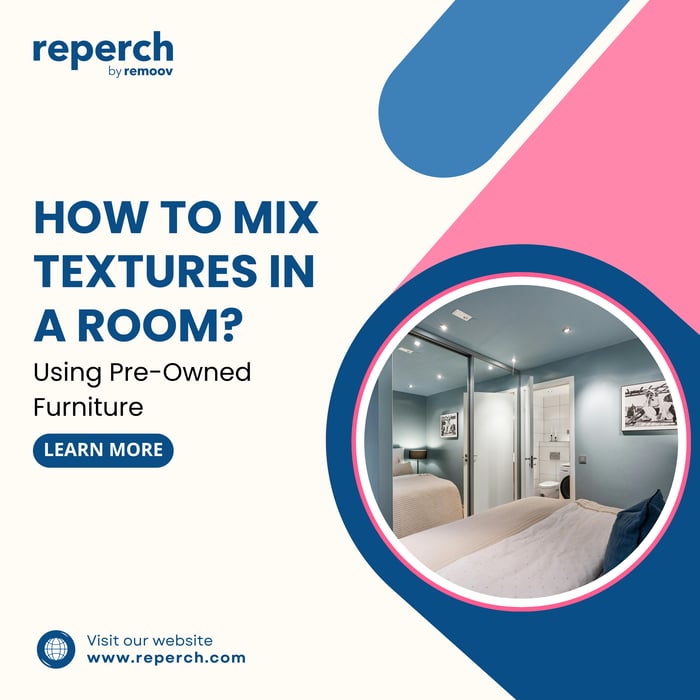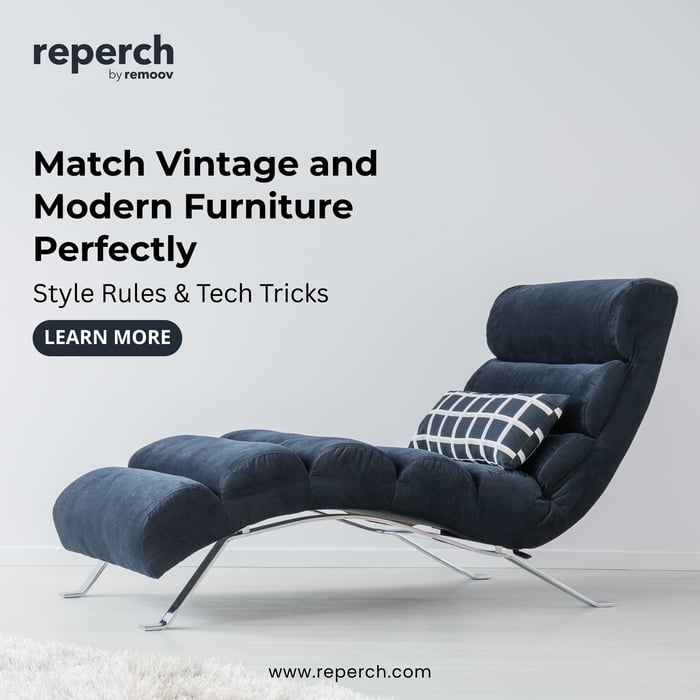Creating a beautiful, balanced room is not just about colors or furniture placement. It is about how materials, finishes, and fabrics come together to create warmth and personality. Mixing textures gives a home depth and character, while pre-owned furniture adds authenticity and sustainability.
If you love interiors that feel collected over time, secondhand furniture is your secret advantage. Each piece already carries texture through its wear, grain, and finish. With thoughtful layering, you can transform your space into a rich, inviting environment that feels both modern and timeless.
Why Texture Matters
Texture defines how a space feels. It makes a room cozy, sophisticated, or energetic, depending on how it is used. Smooth surfaces such as glass or metal reflect light and create polish. Rough textures such as wood or woven fabric absorb light and add warmth.
When mixed correctly, these contrasts make a room visually interesting. Pre-owned furniture makes this process easier because older pieces often have natural variation and patina that give instant depth. A vintage oak table, a soft linen chair, or a worn leather sofa already tells a story through texture.
Start with a Neutral Base
A calm foundation is the key to mixing multiple textures successfully. Choose neutral wall and floor tones such as beige, cream, or soft grey. These hues act as a blank canvas and allow your furniture to stand out naturally.
If your pre-owned pieces come in different finishes, neutrals help unify them. A cream rug, for instance, can balance a dark walnut cabinet and a lighter pine table in the same space.
Start with large pieces as anchors, then layer smaller elements like pillows, throws, and accessories to build richness and variety.
Mix Materials with Purpose
When decorating with pre-owned furniture, variety is inevitable. You may have wood, leather, rattan, glass, or metal all in one room. The goal is to balance them rather than match them.
Combine wood and metal for contrast. A reclaimed wood dining table with steel chairs looks warm yet industrial.
Pair fabric and leather for softness and structure. A linen sofa next to a brown leather armchair creates harmony.
Blend glass and stone for modern elegance. A marble coffee table beneath a glass pendant light feels balanced and grounded.
Each texture should have a reason to exist, contributing something different without overpowering the others.
Play with Smooth and Rough Surfaces
Texture works best through contrast. Pair glossy finishes with matte surfaces and mix structured materials with organic ones.
If your pre-owned furniture includes a polished sideboard, place a woven basket or ceramic lamp on top to soften its appearance. If you have an upholstered chair, position it near a rustic wood accent table to create variety.
This contrast keeps the eye moving through the room and prevents any one material from dominating the design.
Layer Soft Textures for Comfort
Soft materials make a room feel lived in and inviting. Add textiles like rugs, cushions, and throws to bring warmth and color. Each fabric introduces a new sensory layer that complements your furniture.
A pre-owned sofa can look completely new with a mix of cotton and velvet pillows. Add a wool blanket or a jute rug for extra comfort. When layering fabrics, vary the textures more than the colors so the space stays cohesive rather than cluttered.
Natural fibers such as linen, wool, and cotton also align with the sustainable appeal of pre-owned decor.
Define Zones with Texture
In open spaces, textures help organize the layout without walls. Use a rug to define your living area, a smooth table surface for the dining zone, and textured curtains to frame windows.
Each section of the room can have its own texture identity, yet still flow naturally into the next. For example, a woven rug under the dining table contrasts with a plush sofa in the seating area, giving both zones their own presence.
Balance Old and New
One of the biggest advantages of using pre-owned furniture is the ability to mix styles and eras. Combining modern and vintage textures keeps the space dynamic and personal.
A sleek glass coffee table pairs beautifully with a distressed wooden chest. A mid-century armchair complements a minimalist metal floor lamp. The result feels curated rather than staged, as if each item was collected with intention.
Let texture bridge the gap between time periods. A polished surface next to an aged one creates an appealing story of contrast and connection.
Incorporate Natural Elements
Natural materials bring warmth, texture, and authenticity into your home. Many pre-owned pieces already feature solid wood, cane, stone, or leather, making them ideal for this purpose.
Wood introduces grain and depth.
Leather adds luxury and a soft sheen.
Rattan and wicker provide organic movement.
Stone or ceramic accents ground the space with earthy tones.
These materials mix easily with textiles and metals, creating balance while emphasizing craftsmanship.
Accessorize Thoughtfully
Small touches can make a big difference in the texture story of your room. Use accessories to layer details without cluttering the space.
Add handmade pottery or textured vases.
Combine matte ceramics with shiny glass.
Use woven trays for organization and visual warmth.
Hang framed textile art to introduce fabric texture on walls.
Accessories are also an easy way to refresh your decor seasonally without major changes.
Highlight Texture with Lighting
Lighting reveals the true beauty of texture. Soft lighting emphasizes fabrics, while directional light brings out the details in wood grain or stone.
Use multiple light sources to create layers. Combine ceiling fixtures with table lamps and accent lighting. Position lights to cast subtle shadows on textured surfaces, drawing attention to their form.
For example, aim a spotlight at a reclaimed wood headboard or place a warm lamp near a velvet armchair to enhance its richness.
Avoid Common Mistakes
When layering textures, a few missteps can disrupt balance.
Using too many materials: Stick to three or four key textures per room.
Ignoring color cohesion: Different materials can share similar tones for harmony.
Overcrowding: Leave space between textured elements so the eye can rest.
Skipping practicality: Choose materials that fit your lifestyle and are easy to maintain.
With moderation and purpose, your textures will complement rather than compete.
Bringing It All Together
Mixing textures transforms a home from flat to full of life. Pre-owned furniture makes this process more meaningful because every piece has history and craftsmanship built in. A reclaimed table, a linen sofa, and a vintage rug together can create an atmosphere that feels both refined and personal.
Focus on balance, not perfection. Let the combination of surfaces, fabrics, and finishes reflect your personality. The result is a home that feels warm, cohesive, and truly lived in.
Style Sustainably with Reperch
At Reperch, we help you bring texture, quality, and sustainability together. Our curated collection of pre-owned furniture lets you design a space that feels layered, authentic, and environmentally responsible.
Shop our online marketplace to find timeless pieces that tell a story, add texture to your home, and help reduce waste one purchase at a time.








